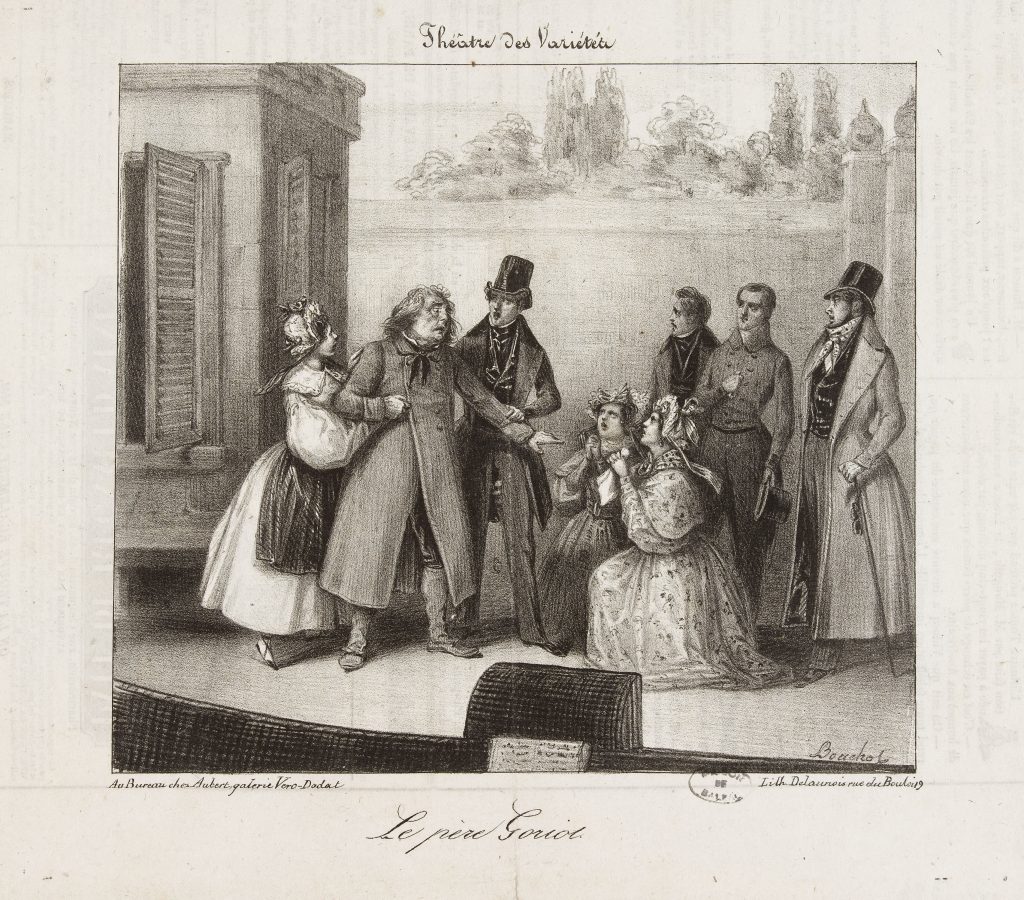
In the 19th century, successful novels were immediately adapted for boulevard theatres. Writers were powerless in the face of this robbery, which was allowed by law at the time, or would decide to then participate in the transformation of their novels. Alexandre Dumas, for example, directed the Théâtre-Historique, which he had built on the Boulevard du Temple. This invasion of novels contributed to a transformation of the rules of theatrical writing.

At the beginning of the 19th century, there was no legal protection for authors, so successful novels were quickly adapted for the theatre, generally without even mentioning the author of the book. This adaptation of Père Goriot was a success, with a run of more than 50 performances. The theatrical version keeps all the protagonists of the novel, but completely modifies the plot, since Balzac’s fierce drama turns into a happy fantasy: we discover that Victorine is Goriot’s hidden daughter, she marries Rastignac, whose ambition is now only sentimental, Vautrin becomes a low-level con man with a big heart… Balzac is the main figure missing from this play, which he would obviously have despised.

The lithograph was printed shortly after the first performance on 6 April. It shows the conclusion, which was given a happy end in the theatrical adaptation, as Goriot triumphed, surrounded by all his children.